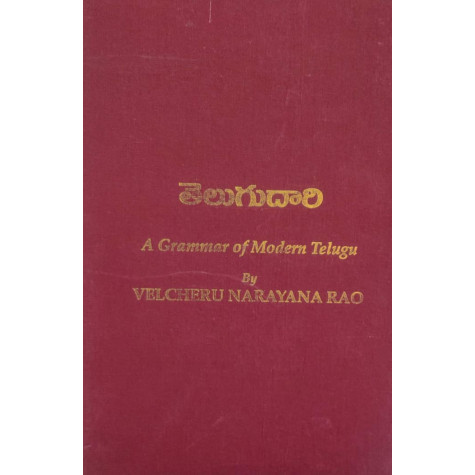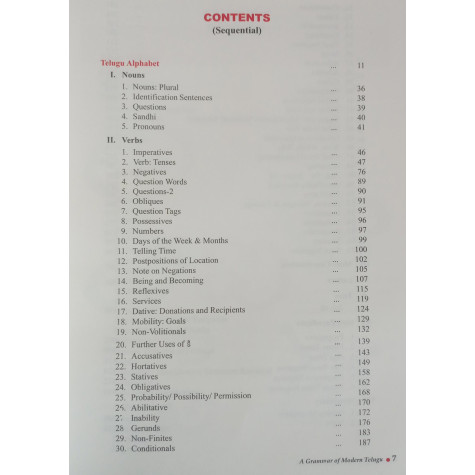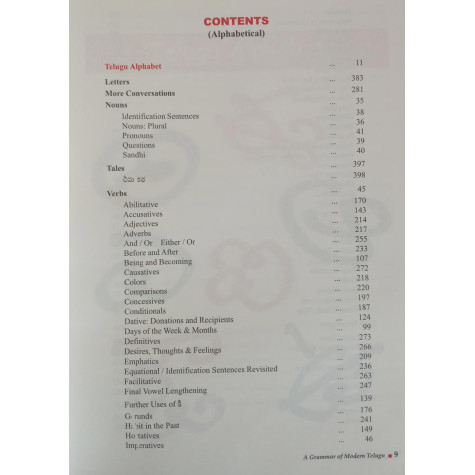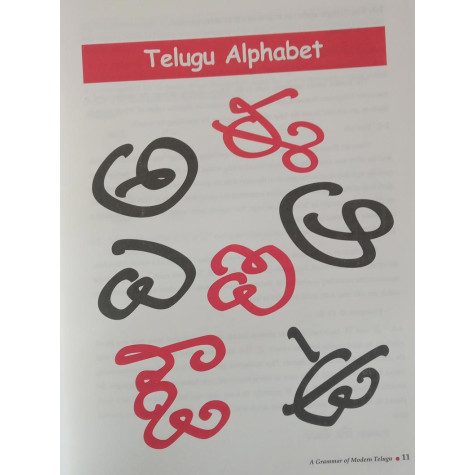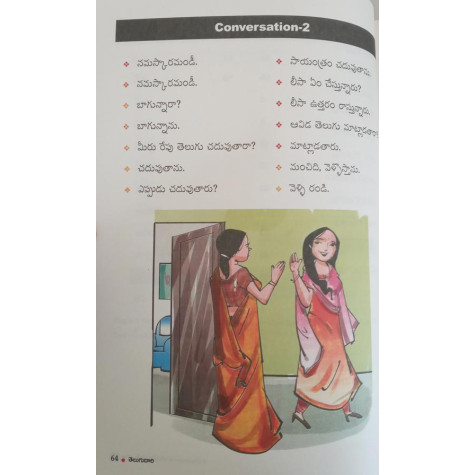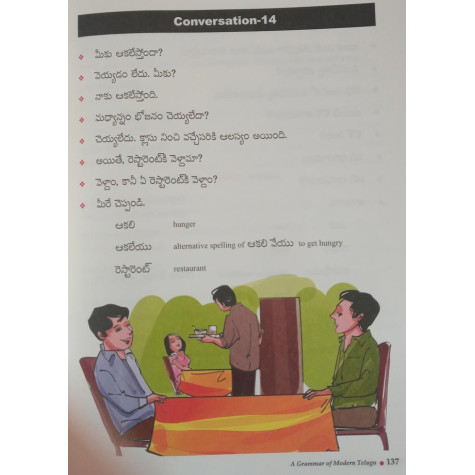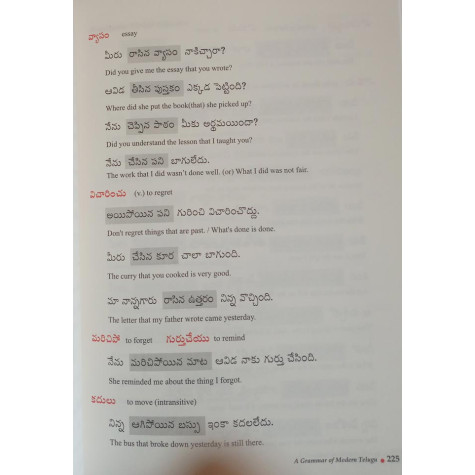HOW TO USE THIS BOOK(తెలుగుదారి) by Velcheru Narayana Rao
It took a long time for me to complete this book. For almost 50 years I have been working on it regularly using it in my classes. My students are non-native speakers of Telugu even if all or them were not born in 'Mugu families, I had to think how to introduce Telugu language to them. Therefore, I started with script and showed them how to write it. A native speaker of Telugu should help them to pronounce the sounds of the script. Ideally, a tape of sounds should follow the book. At this point of time I do not have a tape of that kind.
If you are a beginner in Telugu, you should have the help of a native speaker, at least in the beginning part of this book related to the alphabet and pronouns. In this book., the alphabet is given to you in three sections: I) Vowels, 2) Consonants: Stops, 3) Consonants: Semi-vowels, Liquids, and Sibilants (starting on p. 16). Wherever the writing of the alphabet is not intuitive, I have identified those graphic forms with a red circle around them.
Another thing you should pay attention to is pronouns (starting on p. 41). Pronouns are given to you as charts. A particular feature of Telugu is that 'the first person plural' has two kinds of pronouns: inclusive and exclusive. Inclusive includes the listener, while exclusive excludes the listener.
Then there is a discussion ,about tense (starting on p. 47). The difference between time and tense is that time is universal, and tense is grammatical. There are two tenses in Telugu: one tense indicating actions that have been completed and the other tense indicating actions that have not begun yet. There is another form which indicates actions that are in progress, either now or in the past. This is not a tense it is a mode. A tense is made in Telugu with four different units: the subject, verb base, tense suffix, and subject suffix. Look at the charts that are given and follow them.
The oblique form is a form of the noun or pronoun which should be used before suffixing a case ending or a postposition to it (starting on p. 102). Many words in Telugu have oblique forms. After the positive verb forms are completed, we move into negatives (starting on p. 76). To form a negative, you need what is called an infinitive. Every verb has an infinitive form. Follow the negatives using the infinitive as your base in the past and future tenses............
Tags: Telugudari, Velcheru Narayana Rao, తెలుగుదారి, వెల్చేరు నారాయణ రావు

